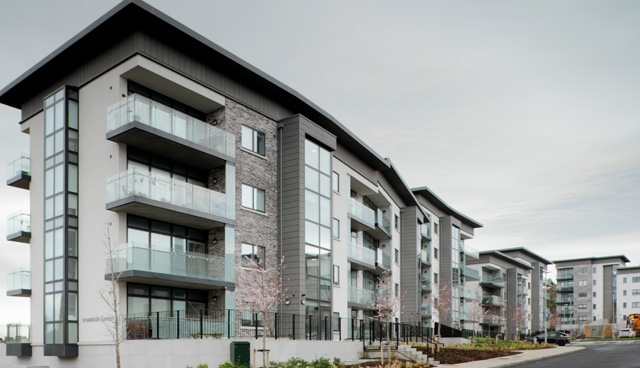
Ireland needs to foster the right conditions for new housing supply
18th July 2023
Is it time for radical thinking on housing provision?
18th July 2023Barcelona’s social and affordable housing policy

Housing Manager for Barcelona City Council, Javier Burón, outlines the city’s mission orientated model to inclusionary housing.
In Catalonia, rents have risen three times faster than household incomes in the last two decades, on the back of bubbles in both real estate and the rental market.
In Spain, housing is a regional competence, however, Burón emphasises that such is the scale of the housing emergency, that the city has been forced to play a role which exceeds its capacity and legal basis.
By way of example, he points out that the city of Barcelona has provided 78 per cent of the emergency housing units and the Generalitat only 22 per cent, despite the fact that distribution should be 40 per cent/60 per cent according to the rules of the housing consortium run by both administrations. Instead of growing its stock, the Generalitat has accumulated a deficit of 1,185 units between 2016-2021.
As a whole, it is estimated that Spain needs around 2.6 million affordable housing units in rental (or other alternative tenures) in order to converge with the 15 per cent average across the rest of Europe. In Barcelona, where rental public housing represents just 1.5 per cent of the overall housing stock, there is a 90,000 affordable housing unit for rental deficit.
“Policies that support homeownership have made it difficult for most of society to access housing. We need to diversify housing tenures,” summarises Burón, emphasising the scale of the challenge.
While a range of short-term solutions to increase capacity have been deployed, Burón stresses that a focus has been placed on developing long-term instruments. The emerging model recognises that 100 per cent private management has proven to be a failure, while a 100 per cent public management is not a virtuous model.
“Housing is too important to be left exclusively in the hands of the market or the State.”
“Housing is too important to be left exclusively in the hands of the market or the State,” explains the Housing Manager. “Effectiveness and efficiency will result from a combination of public, private, and community solutions.”
The emerging model is predicated on what Burón describes as an “ecosystem” of providers and actors targeting the reduction of market housing and an increase of social and affordable housing. This entails a three-provider system: private; public; and non-profit plus commercial (limited profit). These providers are focused on two operational approaches in the form of new development and urban regeneration.
Stock increase
The Housing Manager is quick to point out that in seeking to increase supply, the focus is on quality over quantity, highlighting Spain and the Republic of Ireland as good examples of how, in the past, heavy supply increase did not guarantee economic accessibility.
The three main goals of new land and development policy centre on:
- Ensuring all affordable housing units remain affordable. This is aimed at countering the fact that almost all of the 13 million units built in Spain between 1940 and 2011 have lost their affordability and joined the private market. País Vasco, Illes Balears, Navarra, and Catalonia have become the first four regions to regulate affordable housing in perpetuity.
- New affordable housing zoning requirements aims to increase the land reserves for affordable units, to avoid segregation, and at least half the affordable units will be for rent.
- The third goal, and one which Burón describes as a “game-changer” is the requirement for 30 per cent of most major building renovations and new construction in existing plots to be allocated for affordable housing. This policy recognises that the city cannot grow outwards and so a focus must be put on urban regeneration processes.
Public development of affordable housing in Barcelona has been good. By the end of 2023, there will be 6,600 units finished or under construction, however, Burón stresses that the real driver for change stands in the enablement of public-private-community partnerships.
Ongoing partnership between the city council, cooperatives, and foundations, set up in 2021 aim to deliver 1,000 units over the next decade.
Similarly, Habitatge Metròpolis Barcelona is a PPP between the city council (25 per cent), the Metropolitan Area of Barcelona (25 per cent), and private partners selected through a public tender (50 per cent). The scheme provides for total parity in rights and obligations between private and public partners. Public land is provided in a 75-year leasehold and non-performing units are covered by the administration. The scheme will see 4,500 affordable rental units delivered over eight years.
Other measures highlighted by Burón include the acquisition of private rental housing for social rental. An extraordinary municipal census using water consumption data and the municipal registry, plus fieldwork, identified 10,052 vacant units. Acquisition and renovation measures have enabled a 130 per cent increase in the temporary mobilisation of private housing between 2015 and 2022.
Lessons
Burón believes there are five key learnings to be taken from Barcelona’s affordable housing journey so far. The first is that having a mixture of housing models results in a social mix that may provide opportunity for all. Secondly, social housing provides low-income households with stability, which has a positive impact on employability, community building, and inclusivity.
Thirdly, he believes that public-private and public-community collaborations are “essential” to grow and manage a social housing system, particularly when there is little regional and federal funding available. Condensing his final two lessons, he says: “We need more core capital for affordable build to rent, but also for purchasing, renovating, and rental PPPs. However, evidence-based policies require investments in data collection, management, and research.”






